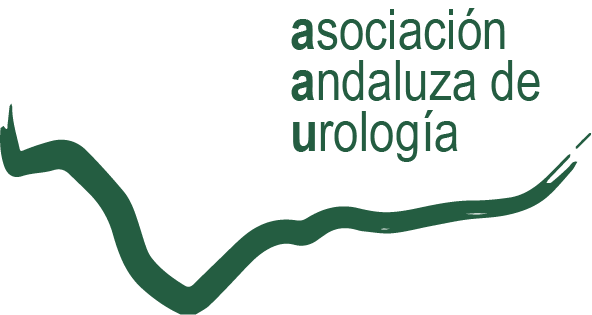What is Overactive Bladder?

Overactive bladder is a condition that causes a sudden, intense feeling of needing to urinate, even when the bladder is not full. It is a common disorder of the urinary system that can affect the quality of life of those who suffer from it. It is characterized by sudden, involuntary contractions of the bladder muscle, resulting in an urgent and frequent sensation to urinate.
Overactive bladder can affect both sexes, although it is more common in women.
** It is important to differentiate “simple” overactive bladder from painful bladder syndrome/interstitial cystitis. Sometimes, an overactive bladder can present with PAIN, PRESSURE OR DISCOMFORT in the suprapubic region and/or with urination as the main symptoms. In this case, when pain is the main symptom, we will talk about “painful bladder syndrome/interstitial cystitis” (SVD/IC), which constitutes a similar clinical entity but with somewhat different management.
* In the following link you can find a detailed presentation by Dr Puche with more information about painful bladder syndrome or BPS/IC:
What are the causes of an Overactive Bladder?
The ultimate cause of overactive bladder is unknown. But yes which is known to be associated with different processes among which stand out:
- Neurological disorders, such as stroke and multiple sclerosis.
- Diabetes
- Acute or chronic urinary tract infection.
- Hormonal changes during menopause in women.
- Tumors or stones (stones) in the bladder.
- Factors that make it difficult to remove urine from the bladder, such as an enlarged prostate (for men), constipation, or previous incontinence surgery.
What are the symptoms of Overactive Bladder?

The ultimate cause of overactive bladder is unknown. But yes which is known to be associated with different processes among which stand out:
- Urgency urinary: sudden, intense feeling of having toe urinate. span> < /span>
- Frequency urinary increased : the need to urinate more frequently than normal, even at night. You may need to go to the bathroom more than 8-10 times a day.
- Incontinence urinary: involuntary loss of urine that can occur by not reaching to the bathroom on time. This type of incontinence is known as “ urgency incontinence.”
- Pain: Sometimes these voiding symptoms associate intense pain with urination or at the suprapubic level (SVD/IC).
How is an Overactive Bladder diagnosed?
How is Overactive Bladder treated?
This is a very individualized therapeutic approach. Depending on the triggering factors and possible causes, different treatments can be administered.
1.- Changes in lifestyle: is always the first step. Reduce body weight, lead a healthy life and avoid urinary irritants (coffee and/or tobacco). Likewise, bladder physiotherapy and pelvic floor exercises can play an important role.
2.- Drugs: These are drugs that try to “relax” the bladder so that the involuntary contractions that generate the symptoms do not occur. The most common are:
– Anticholinergics: solifenacin, fesoterodine, oxybutynin.
– B3-agonists: mirabegron
– Intravesical hyaluronic acid instillations
– Intravesical botulinum toxin injections
– Surgery: in very severe cases surgery can be resorted to.
Overactive/painful bladder can be challenging, but there are treatment options that can help manage symptoms and improve quality of life. Intravesical injection of botulinum toxin is an effective and safe option in appropriately selected patients.
Am I a candidate for intravesical botulinum toxin injection?

In the event that oral treatments (anticholinergics/B-agonists) have failed, and symptoms that deteriorate the patient’s quality of life persist, treatment with intravesical botulinum toxin may be proposed.
Patients should NOT have a urinary tract infection at the time of treatment, for which we will request a urine culture prior to the administration of treatment.
Prophylactic antibiotics should be administered 1 to 3 days before treatment, on the day of treatment, and 1 to 3 days after treatment.
BOTOX should be administered by doctors with experience in the evaluation and treatment of bladder dysfunctions.
How is botulinum toxin administered into the bladder?

Source: Spanish Agency for Medicines and Health Products (AEMPS)https://cima.aemps.es/ top/dochtml/ft/72377/FT_72377.html
Depending on the type of Overactive Bladder it can be administered in two ways:
a.- OVERACTIVE/PAINFUL BLADDER WITHOUT neurogenic detrusor overactivity:
Reconstituted BOTOX is injected (100 Units/10 ml) into the detrusor muscle with the help of a rigid or flexible cystoscope, avoiding the trigone and base. Sufficient saline should be instilled into the bladder to achieve adequate visualization of the injections, but excessive distention should be avoided.
Must be performed 20 injections Distributed throughout the bladder, 0.5 ml each (total volume of 10 ml). After the injections are administered, the saline solution used for visualization of the bladder wall should not be emptied so that patients can test their emptying capacity before leaving the clinic. The patient should be kept under observation for at least 30 minutes after injections and until spontaneous emptying occurs.
Clinical improvement is usually seen in 2 weeks. Repeat injections should be considered when the clinical effect of the previous injection is reduced (median duration in Phase 3 clinical studies was 166 days [approximately 24 weeks] based on patient request for repeat treatment), but not before 3 months from the previous injection. in the bladder.
b.- OVERACTIVE BLADDER/PAIN E URINARY INCONTINENCE WITH neurogenic detrusor overactivity
The procedure is exactly the same but in this case they inject 200 Units/30 ml in the detrusor muscle administering up to 30 injections distributed throughout the bladder. Sufficient saline should be instilled into the bladder to achieve adequate visualization of the injections, but excessive distension should be avoided.
BOTOX It should be administered by doctors with experience in the evaluation and treatment of dysfunctions. bladder rations.





